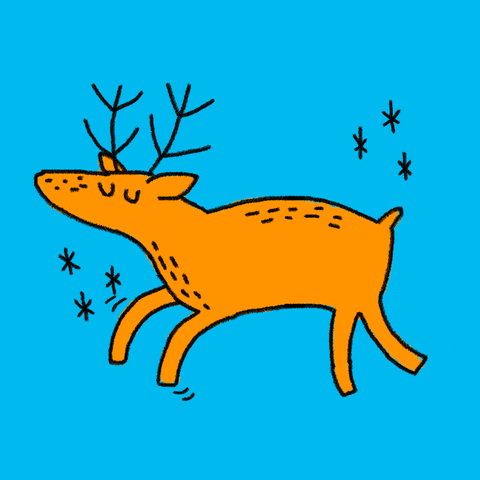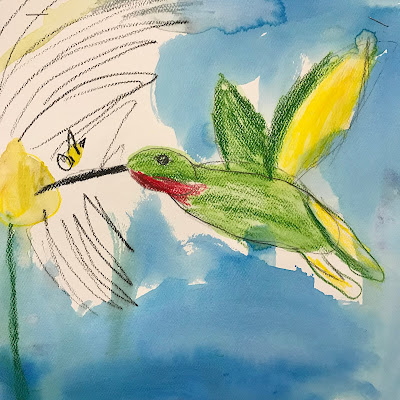According to the Cougar Mountain Zoo newsletter, (and upon this first grade teacher's further investigation into Robert Sullivan's book, The Flight of the Reindeer), perhaps they really can.
"North of Canada there is a large piece of land called Ellesmere Island. The northern tip of the island reaches into the Arctic Circle. Winters are very harsh there, and cold winds blow up to 150 miles an hour. To put that in perspective, a category 4 hurricane has 140 mile an hour winds; that is strong enough to blow roofs off of buildings, blow cars through the air and turn buses onto their sides.
There is a little reindeer called the Peary Reindeer (Rangifer tarandus pearyi) that lives on the northern part of the island and thrives under these terrible conditions. They are the smallest of the reindeer, reaching only about 3 feet tall at the shoulder....
People have seen these little reindeer get picked up by the Arctic winds and lofted into the air. The reindeer have been seen flying as far as 150 feet. That is farther than when the Wright Brothers first flew their flying machine at Kitty Hawk. It is these Peary Reindeer that gave rise to the stories that we hear about Santa having his sleigh pulled by eight tiny reindeer to deliver presents on Christmas Eve."
The first and second grade students had quite the debate. Even the teachers were perplexed by this newsworthy research. Do reindeer really fly?
Hmmmm... we had keenly observed the reindeer at the zoo. And we came up with some hypotheses:
We remembered that their hair is hollow.
So maybe they don't weigh as much as other animals their size.
We noticed that maybe their antlers are sorta shaped like airfoils.
But we still weren't quite sure.
So we went to work on making our own reindeer to test their ability to fly.
We got supplies, including feathers, from the MakerSpace...
and started to make and test reindeer.
There are a lot of ways to make antlers.
Some used cartons for bodies and Popsicle sticks for antlers.
And we didn't forget a red nose!
We discovered that feathers weren't enough. We needed to add some type of lift force.
The weight of the reindeer, especially with the top heavy antlers, was countered by the lift of this pink airplane and a few feathers.
The canopy/parachute on top of this reindeer
didn't keep this reindeer aloft very long.
This design especially needed some lift.
Why not go for double lift? Will it fly farther?
We tested our reindeer and most of them flew, with the help of some heavy duty thrust against the drag.
One even flew 25 feet!
After our testing, we were still a bit skeptical
about the ability of reindeer to really fly.
Here are our diagrams and our conclusions
to the question, "Can reindeer really fly?"
"I think reindeer fly with Magic Corn."
I think they fly because their antlers get caught in the wind and I think also that their legs move to make them go."
"They probably have magic."
"I think that the tiniest reindeers fly Santa's sleigh,
because they can get their body right off the ground."
So do reindeer really fly? Is our resource reliable? Should we enter the debate of real news/fake news?
Not yet. 😄 For now we're content to understand
that reindeer need some help
to counter drag and gravity
and/or some help from magic corn!

This teacher now believes!
(tongue in cheek)
Now your turn to do the research and test for yourself:























































